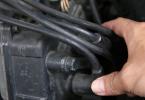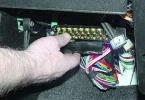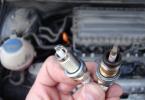Not every motorist is familiar with the expression "pours candles." Many much more clearer other expression - "The car does not start in the frost." And one of the reasons for this phenomenon is poured with gasoline candles. Why is this happening? And most importantly, how to solve this problem.
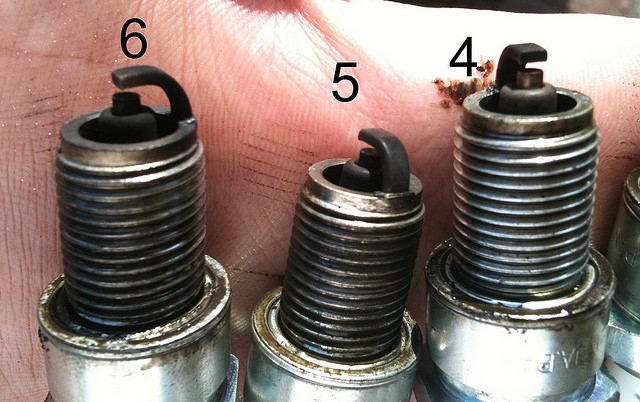
Causes of the problem
To understand why the candles floods, you need to figure it out in the process that happens when the engine is started. Partially described this question in the article "does not twist the starter."
We refresh information about the main links of the engine running chains:
- battery;
- starter;
- nozzles;
- candles.
In the cold season, the engine compression is usually weak. Cold air contains more oxygen. Consequently, more fuel is needed for fire. Nozzles feed more fuel. If the battery is not "in the most cheerful spirit", then the problem is further aggravated, since the starter does not twist the cylinders as it should. The problem in the wires leading to the starter, or the loss of energy inside it - another causes of why the car does not start.
Several or all of the factors listed above lead to the fact that the engine nozzles "generously" fuel. Result: fills with gasoline candles.
What to do?
The eternal Russian question is relevant and in this case. Options for solving the problem "Candles floods - what to do" from different car enthusiasts are completely different. And I must say that not all of them are correct.
Before you list various cleaning methods, we list some principles that you should remember. First, you need to take care of the abrasion (therefore, it is impossible to use coarse emery paper and other brutal means). Secondly, you should take care of a high temperature candle. Therefore, it is not worth measuring a candle on an open fire and even more so do it for a long time. Although many car enthusiasts are not caught in this way. Thirdly, before reanimating the candle, we advise you to measure it with a megometer resistance. If the megometer (2500) does not show + infinity on the second scale, then most likely the candle must be replaced. Even the value of 1000 is likely to be insufficient.
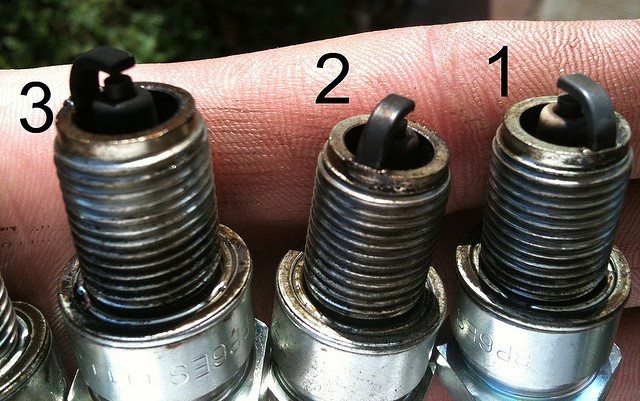
Since the candlelight is often formed to the Nagar, they must not only dry, but also clean. Someone prefers Kerosene to remove Nagara, others use metal brushes (with a thin pile), others prefer processing sandblasting. Although sandblasting is effective, but the benefits of such a procedure are short-lived and short-lived.
There are chemical methods for cleaning candles. For example, the processing of candles by the rust converter. Exposure time (so that the rust cleaner has worked) - half an hour. After that, you need to clean the candle with a tree with a wand. Then rinse with water and dry. A similar method of cleaning can be used with acetone.
Old proven by our ancestors. The method is cleaning with vinegar. Exposure time - 1 hour. Then drip some electrolyte (about 5 drops).
Ultrasound cleaning is shown on the video!
There are many other cleaning methods. In this case, you choose any of them at your own risk.
If the candles are in order, then the reason should be sought in the other. We advise carefully to choose fuel, because it is of great importance.
Without removing candles ...
Some car enthusiasts, who, when late to work, want to quickly dry the candles, use another way. It is applicable for injection engines. Press the gas pedal to the floor, begin to turn the starter for 10-15 seconds. Thus, the fuel is not served, and the candles are dried. This method is not suitable for those who have a weak battery.
Knowing specialists recommend from time to time "turn the engine". This means that it is necessary about 50 or more kilometers about 50 and more kilometers at a good fuel at a speed of 100 to 120 km / h. This cheat "procedure" allows you to get rid of Nagara in the combustion chamber.
Let's summarize:
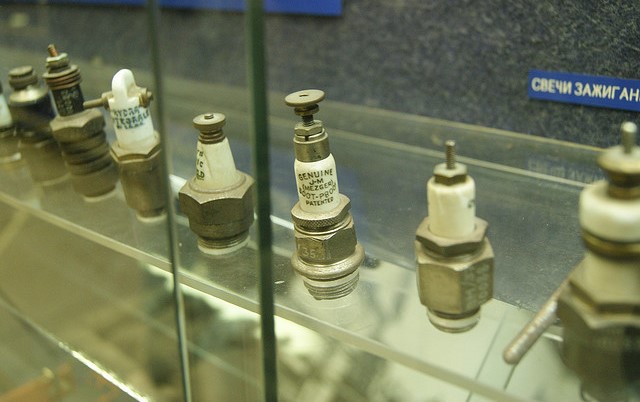
Candles in oil
Some car enthusiasts complain that the candles poured oil. At the same time, someone can advise checking the candlestones, and someone recommends checking the oil-giving rings. Although the oil and can leak through these rings, but in very small quantities. And in the process of starting the engine, it quickly goes. This problem is treated with the replacement of the oilmaging rings.
Other possible reasons:
- wear of cylinder sleeves;
- wear oil seals.
Nevertheless, sometimes some motorists confuse oil with nagar from gasoline.
We hope that tips from this article will be useful for you.
